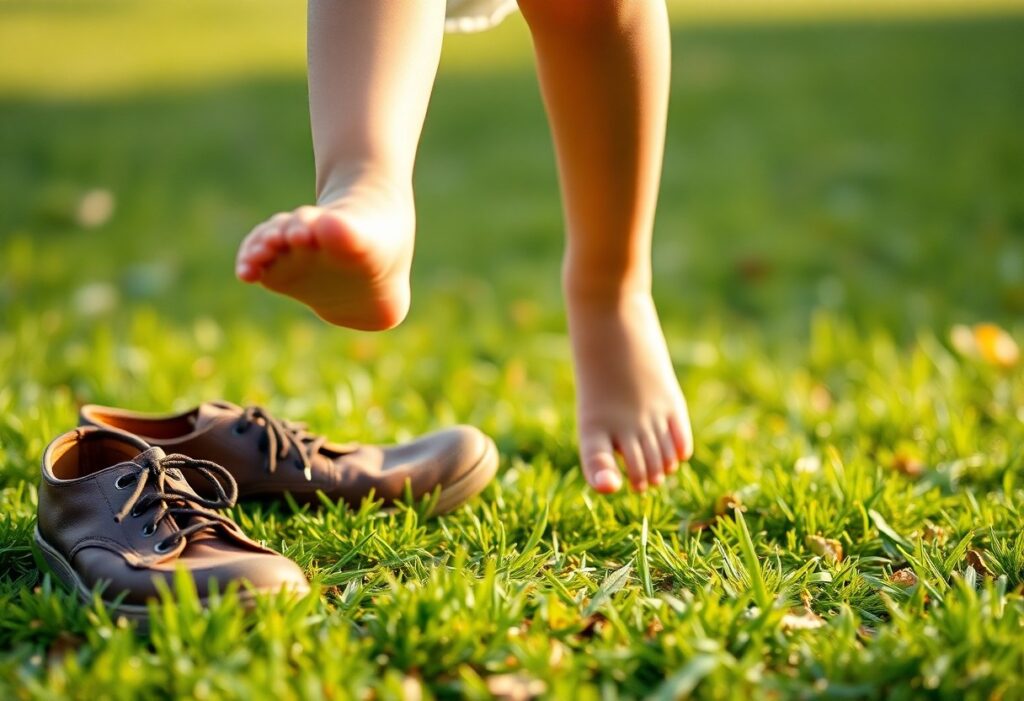
When considering the growth and development of your child’s feet, it becomes essential to fully understand the orthopedic implications associated with barefoot footwear. This specific type of footwear is designed to promote natural foot growth, which plays a crucial role in enhancing muscle strength and improving balance. Nevertheless, it is important to recognise that there are potential risks of injury if your child’s feet have not yet adapted to the minimal support that such shoes provide. As a result, it is vital to carefully weigh the benefits of increased proprioception and optimised foot mechanics against the possible dangers of instability and injury. By staying informed, you can make well-rounded decisions that effectively support your child’s foot health.
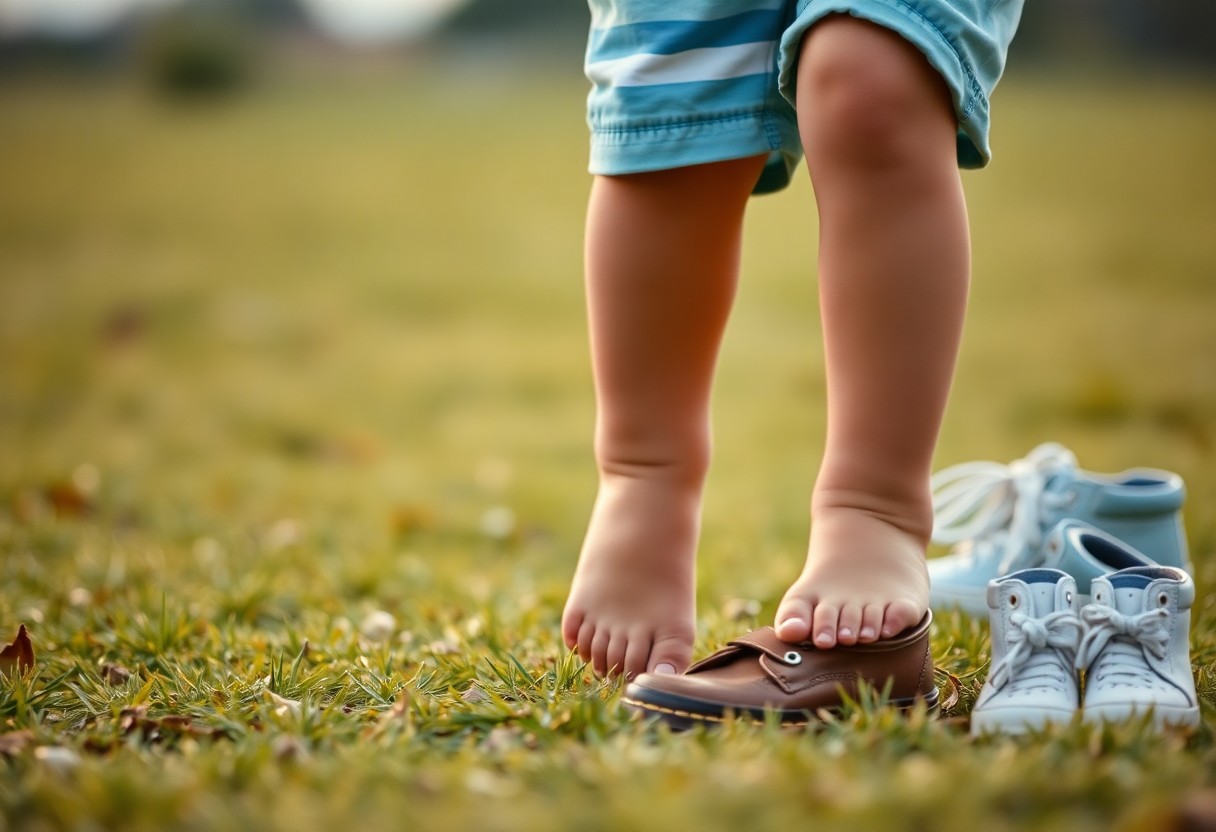
Understanding the Significant Benefits of Minimalist Footwear on Children’s Foot Development
Extensive research has conclusively shown that minimalist footwear can have a profound impact on pediatric foot development by fostering natural foot mechanics. Children who frequently wear these types of shoes often demonstrate notable improvements in foot strength and enhanced flexibility compared to their peers who wear conventional footwear. Furthermore, exposure to various terrains, which is typically associated with minimalist shoes, significantly contributes to the development of proprioception skills that are critical for overall motor development during these formative years. This natural interaction with diverse surfaces not only enhances sensory feedback but also promotes the formation of robust foot structures, ultimately leading to healthier long-term outcomes for your child.
Comprehensive Examination of Longitudinal Arch Development in Children: Findings from a Thorough Three-Year Study
A recent in-depth longitudinal study spanning three years meticulously examined the formation of the longitudinal arch in children who wore minimalist footwear. The findings revealed that children within this group exhibited more pronounced arches, highlighting the potential advantages of minimalist shoes in promoting natural biomechanics. These results align with the growing emphasis on optimising foot development through footwear that does not restrict growth, which is vital for ensuring healthy overall physical development. Such insights are invaluable for parents who wish to make informed choices about their children’s footwear, further reinforcing the importance of selecting shoes that actively support natural growth patterns.
Critical Evaluation of Toe Splay: Important Comparisons Between Minimalist and Traditional Footwear
The phenomenon of toe splay, which refers to the natural spreading of toes during weight-bearing activities, was markedly more pronounced in children who wore minimalist shoes compared to those in conventional footwear. A study assessing forefoot width indicated that toe splay increased by as much as 15%, facilitating improved grip, balance, and overall foot function. This enhanced toe splay is vital for boosting the effectiveness of the foot during various activities, making it a crucial factor in maintaining overall foot health. Understanding the mechanics of toe splay can assist in selecting the most appropriate footwear that promotes optimal foot functionality for children.
Critical Evaluation of Toe Splay: Important Comparisons Between Minimalist and Traditional Footwear
| Type of Shoe | Average Toe Splay (mm) |
|---|---|
| Minimalist Footwear | 12-15 |
| Conventional Footwear | 8-10 |
Assessing toe splay is essential for understanding how different types of footwear influence children’s foot development. Research indicates that minimalist shoes encourage a toe splay averaging 12-15 mm, whereas conventional shoes restrict this splay to a mere 8-10 mm. This difference is significant, as increased toe splay is associated with enhanced stability and effective push-off during movement. By choosing footwear that promotes natural splay, you can support improved motor skills and overall foot functionality in your growing child, ultimately contributing to their comprehensive physical well-being.
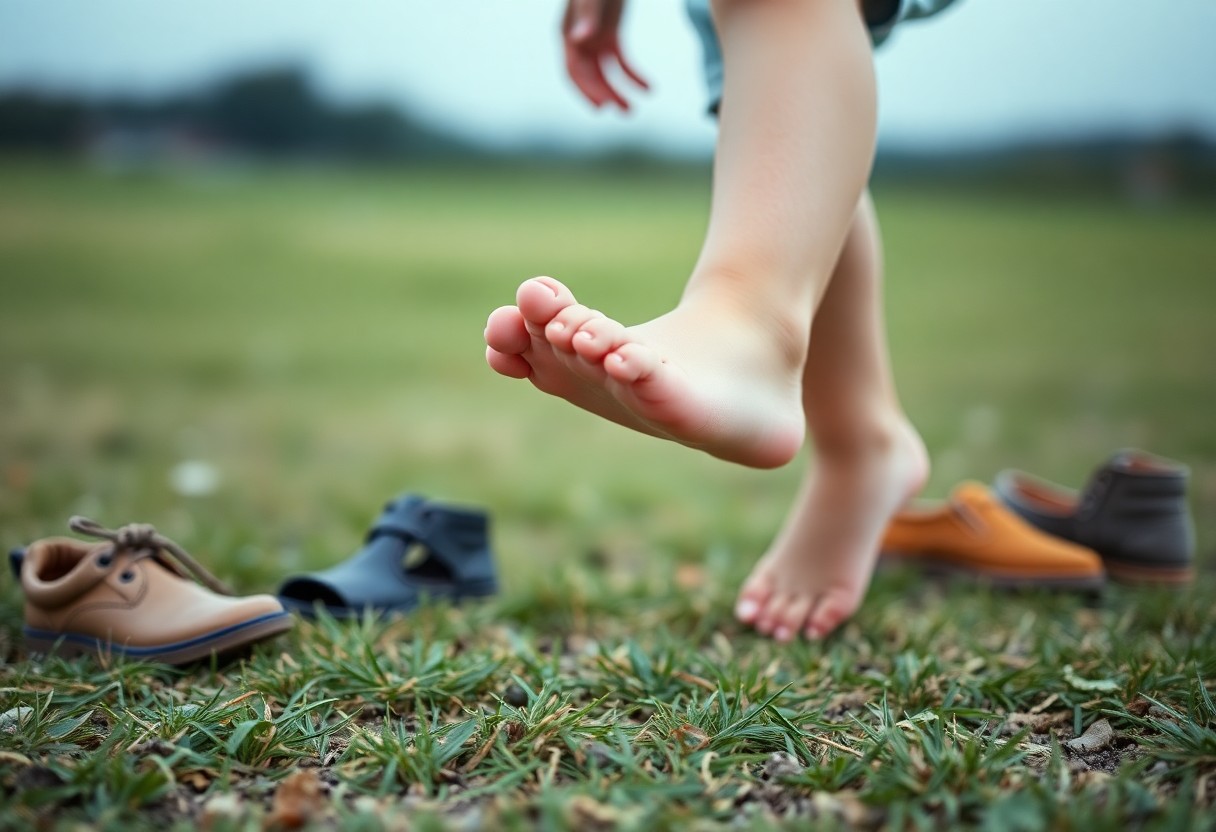
Guiding Parents in Making Informed Choices About Pediatric Footwear: Essential Clinical Recommendations
Following clinical guidelines when selecting pediatric footwear is paramount for promoting healthy foot development. Conducting regular assessments of children’s shoes can help identify any issues arising from poor fit or unsuitable styles. Establishing a comprehensive checklist for evaluating shoes can streamline this process, taking into account crucial elements such as heel height, arch support, and toe box width. Educating parents and caregivers on how to select and maintain appropriate footwear can significantly enhance the likelihood of fostering robust foot health as children grow. This proactive approach empowers families to make informed decisions regarding their children’s footwear choices, ensuring their physical development is well supported.
Guidelines for Safe Age-Specific Footwear Transitions: Navigating from First Walkers to Adolescents
Transitioning from shoes designed for first walkers to those suitable for adolescents is an incremental process requiring careful consideration of your child’s ongoing foot growth and developmental stages. For infants, lightweight and flexible shoes that encourage natural movement are ideal, while toddlers benefit from shoes that provide a secure fit and additional support as they gain confidence in their walking abilities. As children approach adolescence, selecting footwear that balances style with necessary orthopedic support becomes crucial, ensuring the continued health of their developing feet. This thoughtful process not only supports physical growth but also fosters independence in footwear selection, empowering children to make their own choices.
Implementing Effective School Footwear Policies: Aligning with WHO Guidelines for Optimal Health
Establishing school footwear policies that align with WHO recommendations is instrumental in promoting foot health among students. By ensuring that children wear appropriate and supportive shoes tailored to their physical activities, schools can help foster long-term orthopedic benefits. Encouraging parents to select footwear that provides stability and protection significantly reduces the risk of injuries during recess and physical education classes. This proactive approach supports healthy growth and instills in children and families the importance of selecting the right footwear for various activities, contributing to a culture of wellness within the school environment.
The WHO endorses policies advocating for appropriate footwear to mitigate foot-related health issues in children. Schools adopting these guidelines can set mandatory standards for footwear that are both functional and conducive to healthy foot development. Engaging parents in discussions about suitable footwear choices and providing educational resources can enhance community awareness. A robust framework can also facilitate regular inspections of footwear to ensure compliance with standards, ultimately contributing to a healthier school environment for all children.
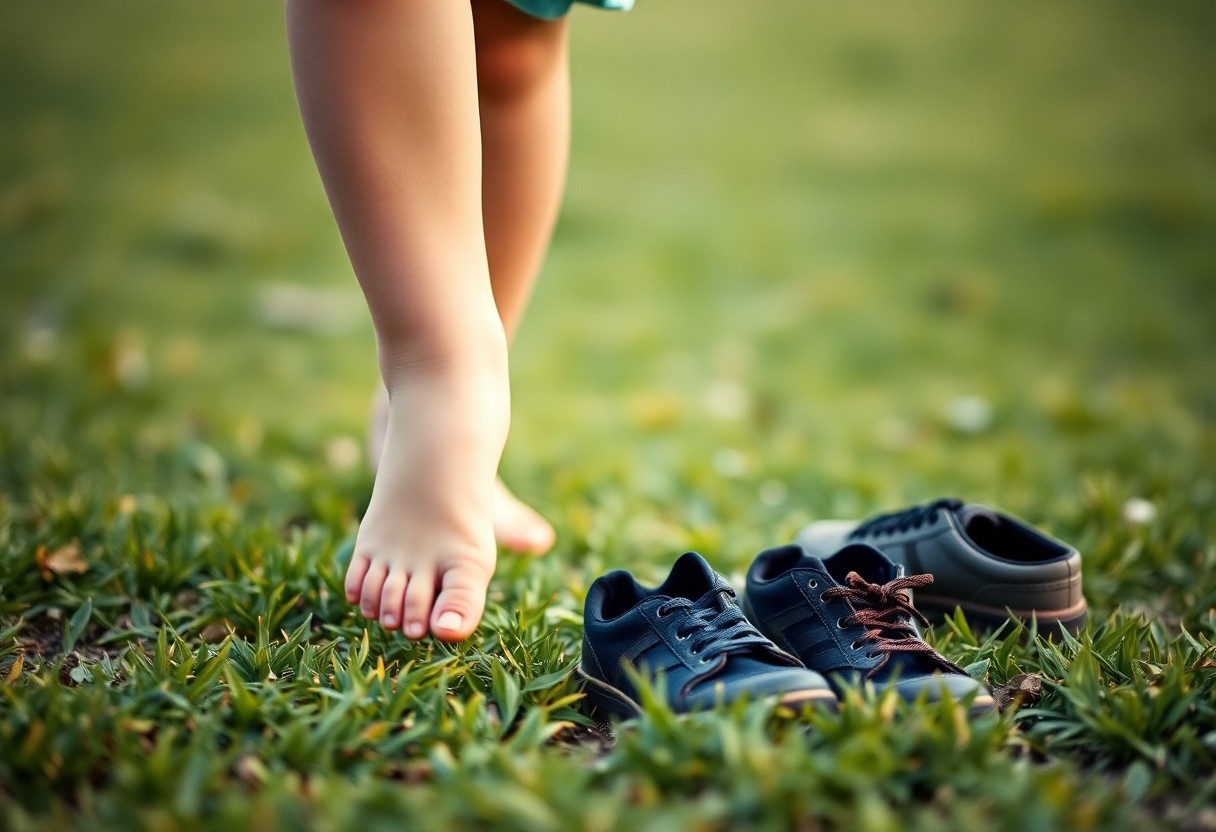
Prioritising Safety in Footwear Design: Key Considerations for Children's Footwear
Ensuring safety in footwear design encompasses multiple critical factors, including padded interiors, structural integrity, and adherence to appropriate performance standards. It is vital to select footwear that not only supports your child’s natural foot development but also minimises risks associated with common outdoor activities. An ideal shoe should prioritise shock absorption, provide a strong grip to prevent slips, and incorporate features that assess various environmental factors, ensuring your child’s feet are well protected and comfortable across different terrains. This emphasis on safety alleviates concerns during active play and exploration, allowing children to engage confidently in their surroundings.
Assessing Puncture Resistance: Understanding Industry Standards from Leading Footwear Brands
The aspect of puncture resistance is a crucial safety feature for children’s footwear, especially for those who enjoy outdoor exploration. Leading footwear brands often adhere to rigorous testing standards, including ASTM F891-21, to evaluate how well a shoe can withstand sharp objects. These stringent tests ensure that your child’s shoes can effectively protect their feet from potential hazards, providing parents with peace of mind during playtime and outdoor adventures. Understanding these standards can guide parents in making informed choices about the safety features of footwear, ensuring comprehensive protection for their children.
Understanding Thermal Insulation: Essential Features for Winter Footwear to Keep Kids Warm
When selecting winter footwear, prioritising thermal insulation is essential for keeping your child’s feet warm and preventing frostbite. The design should incorporate materials with a high thermal resistance rating, enabling shoes to maintain an optimal internal temperature. Look for thermal insulation features that provide comfort and protection, ensuring that your child remains active and comfortable even in the coldest weather conditions. This attention to detail can significantly enhance your child's winter experience, allowing them to enjoy outdoor activities without discomfort.
As you assess thermal insulation for winter models, various features can enhance warmth. Insulating materials such as Thinsulate or fleece linings are crucial, as they create barriers against frigid temperatures while maintaining breathability. Seek footwear that integrates moisture-wicking properties to keep feet dry, as excess moisture can lead to heat loss. A well-constructed winter shoe should also provide insights into its insulation performance, typically indicated by a thermal rating, ensuring your child can enjoy winter activities without discomfort or health risks.
Recognising the Importance of Barefoot Footwear for Optimal Pediatric Health
In conclusion, it is crucial to acknowledge that the use of barefoot footwear within pediatric populations carries various orthopedic implications that can significantly influence your child’s foot development and overall physical health. By encouraging natural foot movement and development, these shoes can positively contribute to biomechanics. However, it is equally important to ensure proper usage, allowing your child to transition gradually to avoid discomfort or injury. Ultimately, understanding the balance between the benefits and potential risks will empower you to make informed footwear choices that cater to your child’s unique needs, ensuring their feet develop healthily.
Addressing Common Queries about Barefoot Footwear: Essential Insights for Parents
Q: What advantages do barefoot footwear provide for children?
A: Barefoot footwear is specifically designed to mimic the natural shape and function of the foot, leading to improved foot mechanics. For children, this can result in the development of strong foot muscles, enhanced balance, and improved proprioception. Additionally, these shoes promote natural foot movement and reduce reliance on cushioned support, potentially resulting in better alignment and biomechanics as they grow. Understanding these advantages is vital for parents aiming to support their children’s foot health effectively.
Q: What risks should be taken into account when children wear barefoot footwear?
A: While barefoot footwear can offer numerous benefits, there are certain risks to consider. Children transitioning too abruptly to barefoot shoes may experience discomfort or a heightened risk of injury due to insufficient cushioning and support, especially if they are accustomed to traditional footwear. Therefore, it is essential for parents to ensure that their child gradually acclimates to barefoot footwear, allowing ample time for their feet to adapt. Additionally, monitoring for signs of pain or foot issues during this transition is advisable, which is crucial for maintaining optimal foot health.
Q: How can parents assess whether barefoot footwear is suitable for their child?
A: Parents should evaluate their child’s foot development, activity levels, and any existing orthotic needs before selecting barefoot footwear. Consulting with a pediatrician or a podiatrist can provide valuable insights into the child’s individual foot health and requirements. Observing the child’s comfort level, foot flexibility, and any signs of discomfort when wearing these shoes can also aid in the decision-making process. Starting with brief periods of wear and gradually increasing usage can help determine the suitability and comfort of the footwear, ensuring that the chosen options meet the child's developmental needs.
The Article Orthopedic Implications of Barefoot Footwear for Pediatric Populations appeared first on My Shoes Finder
The Article Barefoot Footwear and Its Orthopedic Impact on Children Was Found On https://limitsofstrategy.com
The Article Barefoot Footwear’s Orthopedic Benefits for Children found first on https://electroquench.com



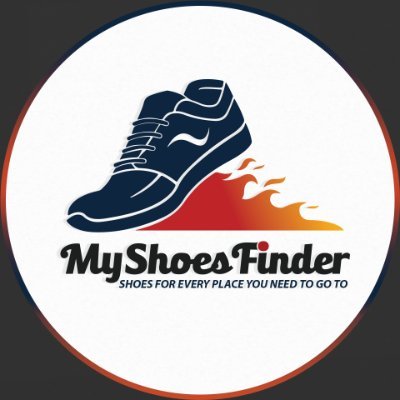
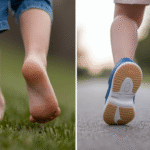



Oh, the conundrum of choosing the right footwear for our little ones! As a parent wrestling with this very dilemma, I can’t help but chuckle at the thought of my child’s fashion sense being dictated by the orthopedic needs of their growing feet. It’s a comical struggle—do I go for the “cool” sneakers with flashing lights or the minimalist shoes that promise to unlock the full potential of their tiny toes?